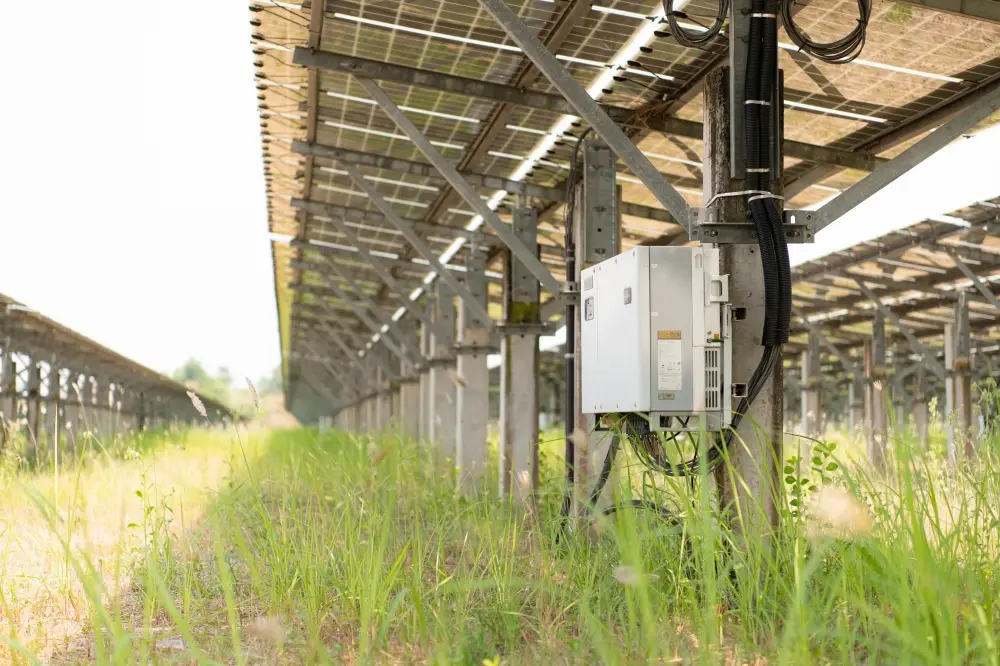Protecting Solar Power Systems with DC Surge Protector
What is DC SPD for Solar?
A DC Surge Protective Device (SPD) is a safety component designed to protect your solar photovoltaic (PV) system from sudden spikes in voltage—often called surges. These surges can enter a PV system through:
- Lightning strikes (direct hits or induced surges through nearby structures)
- Switching events within the PV or grid network
- Grid disturbances that travel from the AC side into the DC side of your system
Think of an SPD as an emergency escape ramp for excess voltage—when a dangerous surge rushes in, the SPD diverts it safely to the ground before it reaches your expensive equipment.
A single lightning strike in the vicinity can instantly fry your inverter, BMS, or sensitive electronics—unless protected by an SPD. In fact, according to the U.S. National Renewable Energy Laboratory (NREL), lightning is one of the top five causes of PV system failures in high-risk areas.
Example:
A small commercial PV plant in Florida—one of the most lightning-prone states in the U.S.—installed DC SPDs rated for 1000 V DC and 40 kA. During a summer storm, a direct lightning hit damaged street lighting in the area, but the PV system continued operating normally the next day.
Key Parameters for Selecting the Right SPD
Choosing the right SPD isn’t just about buying a device labeled “solar”—it’s about matching the device to your system’s real-world needs. Here’s what to consider:
- Voltage Rating (Uc) – This should be slightly above your PV system’s maximum DC voltage. For example, a 600 V SPD for a system with a maximum of 550 V DC. Choosing too low risks constant triggering; too high can leave you underprotected.
- Maximum Discharge Current (Imax) – The peak surge current the SPD can safely divert. In lightning-heavy regions, look for devices rated 40 kA or higher per pole.
- Response Time – Measured in nanoseconds. Faster SPDs (< 25 ns) react almost instantly, reducing the risk of equipment damage.
- Safety Certifications – Look for compliance with IEC 61643-31 or EN 61643-11 to ensure reliable performance under international testing standards.
- Replaceable Modules – Modular SPDs allow quick cartridge replacement after a major surge event, keeping downtime minimal.

Case in Point:
A 100 kW PV installation in Vietnam selected modular Type 2 SPDs rated at 1000 V DC and 40 kA Imax. After a seasonal thunderstorm caused several surges, technicians simply swapped out the SPD modules in under 10 minutes—avoiding inverter downtime and revenue loss.
Benefits of Using SPDs in PV Systems
SPDs do more than just prevent catastrophic failures—they also deliver measurable financial and operational advantages:
- Protect Equipment Investment – Extends the lifespan of inverters, optimizers, and monitoring hardware.
- Minimize Downtime – Avoids losing production days due to repairs.
- Lower Maintenance Costs – Fewer equipment replacements and service calls.
- Better ROI – A $100–$300 SPD can protect equipment worth tens of thousands of dollars.
Case Study:
A distribution center in Germany with a 250 kW rooftop PV system installed SPDs on both DC and AC sides. During a major storm, neighboring facilities without SPDs reported inverter replacements costing €4,000 each. The distribution center had zero equipment failures, and production continued uninterrupted.
How to Select DC SPD for Solar System?
Use this decision framework:
- Identify System Voltage – Check your PV array’s open-circuit voltage (Voc) and add safety margins for temperature effects.
- Assess Surge Risk – Use lightning density maps or historical weather data to understand your exposure level.
- Choose SPD Type(s) – Type 1 for high direct lightning risk, Type 2 for general indirect surge protection, Type 3 for sensitive electronics.
- Check Ratings – Ensure both Uc and Imax match your system requirements.
- Consider Maintenance Features – Status indicators, remote monitoring capability, and modular cartridges.
Example:
For a typical residential 8 kW rooftop PV system in a low-lightning area, a Type 2 SPD rated for 600–1000 V DC with 20–40 kA Imax is a cost-effective and reliable choice.

How to Connect Circuit Breaker to Solar?
When adding an SPD to your PV system, a circuit breaker is often installed in series to protect wiring and allow safe disconnection for maintenance.
Installation Steps:
- Shut Down Safely – Disconnect AC and DC power before working.
- Install the Circuit Breaker – Place it in series with the PV positive conductor before the SPD. Some systems also protect the negative conductor.
- Wire the SPD – Connect it in parallel to the DC bus, keeping wire runs short and straight to reduce impedance.
- Ground the SPD – Use the shortest possible path to your main grounding system.
Basic Wiring Example:
PV Array (+) —-[Circuit Breaker]—-+—-> Inverter (+)
|
[SPD]
|
Ground

Practical Tip:
Follow the SPD manufacturer’s wiring diagram to avoid miswiring, which can make the protection ineffective or even dangerous. If you’re not experienced with PV electrical work, hire a licensed installer familiar with surge protection and solar wiring codes.
